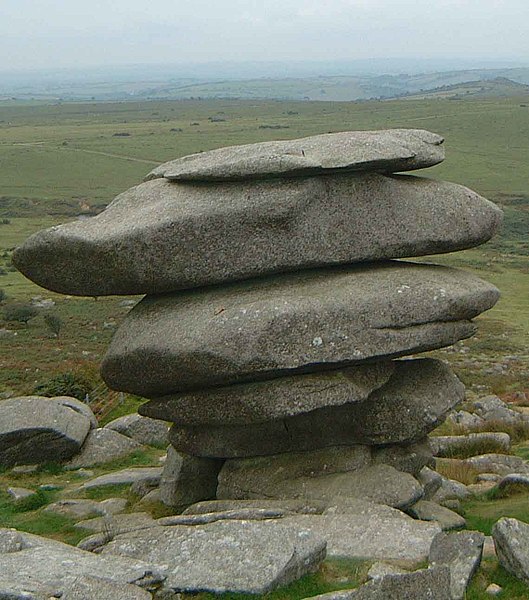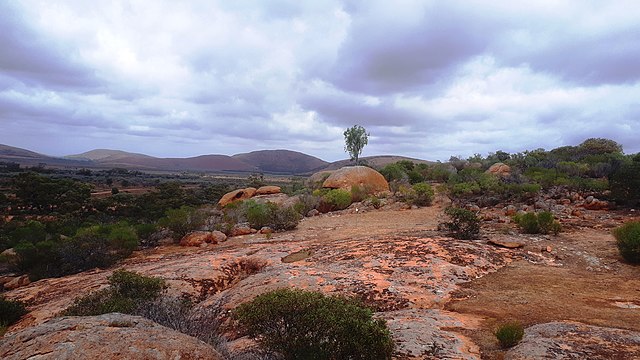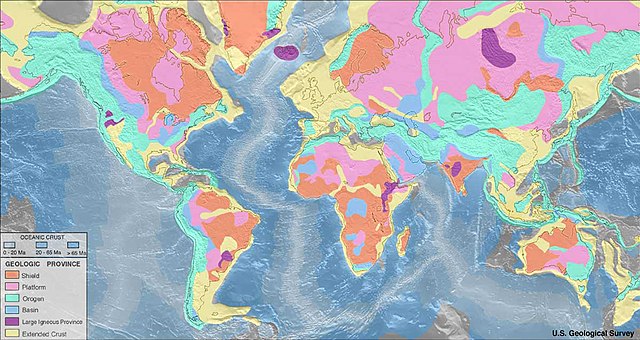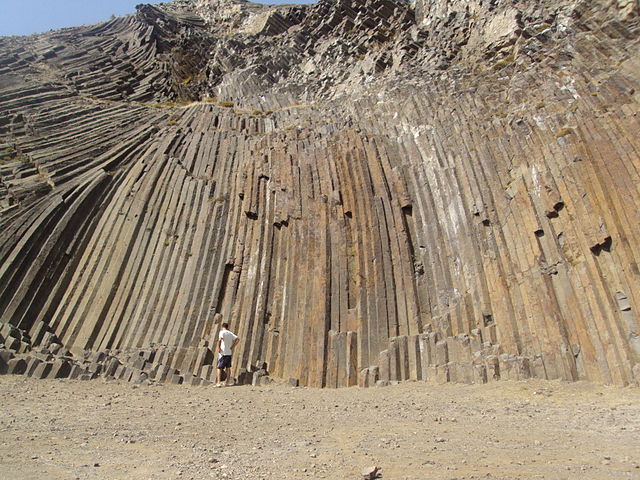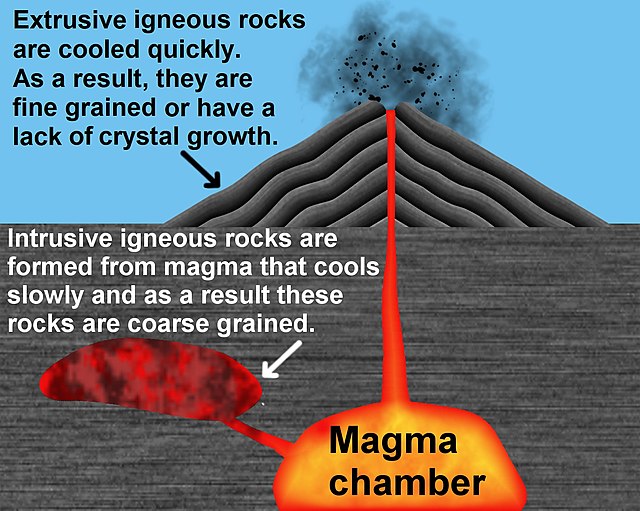Granite is a coarse-grained (phaneritic) intrusive igneous rock composed mostly of quartz, alkali feldspar, and plagioclase. It forms from magma with a high content of silica and alkali metal oxides that slowly cools and solidifies underground. It is common in the continental crust of Earth, where it is found in igneous intrusions. These range in size from dikes only a few centimeters across to batholiths exposed over hundreds of square kilometers.
Granite containing potassium feldspar, plagioclase feldspar, quartz, and biotite and/or amphibole
The Cheesewring, a granite tor in England
A granite peak at Huangshan, China
Pink granite at Hiltaba, South Australia (part of the Hiltaba Suite)
Igneous rock, or magmatic rock, is one of the three main rock types, the others being sedimentary and metamorphic. Igneous rocks are formed through the cooling and solidification of magma or lava.
Geologic provinces of the world (USGS) Shield Platform Orogen Basin Large igneous province Extended crust Oceanic crust: 0–20 Ma 20–65 Ma >65 Ma
Volcanic eruptions of lava are major sources of igneous rocks. (Mayon volcano in the Philippines, erupting in 2009)
Natural columns of igneous rock separated from each other by columnar joints, in Madeira
Formation of igneous rock


